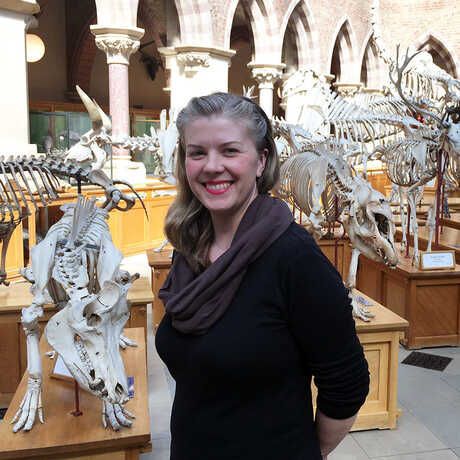Research Associate, Anthropology
My research as a cultural anthropologist examines the scientific cultures within museums. I study how museum collections are currently being re-evaluated as sites for mining new kinds of data across disciplines, such as genetic sampling or as preserved cultural heritage. My ethnographic research explores the behind-the-scenes spaces of museums, where I work alongside scientists in the collections, laboratories and biorepositories to study the cultural practices of collecting, preserving and understanding the diversity of life. Objects tell stories, through their creation, circulation, perceived value, and the connections they embody between people, places, materials, and interests.
As museum collections have been “rediscovered” as sites for mining biomaterials in an effort to collect samples of all life, specimens collected recently—as well as those preserved over a century ago—are now being re-evaluated for use in projects such as mapping historical climate change and creating genomic databanks. My research examines how value is created through the imagined potential utility of these collections, as conceived from multiple perspectives. Throughout my research I explore the fusions of nature and culture in museum collecting practices in the era now designated as the Anthropocene, or Age of Humans. Framed as yet another source now available for data science, museum collections have been accumulating for centuries with the amount of “untapped biodiversity resources” in museum collections, botanical gardens and university collections estimated as high as three billion specimens. However, collections are also cultural artifacts in and of themselves, central to global negotiations of exchange, value and use, which are in turn bound up in the changing materiality of these objects. Connecting research across the social and biological sciences I examine museum collections and scientific communities with the goal of re-evaluating both organisms and artifacts as sources for new kinds of interconnected data, examining human-ecosystem interactions through time.
Areas of current research include:
- An ethnography of the Global Genome Initiative at the Smithsonian National Museum of Natural History (Washington D.C.), examining the integration of genomics into museum collecting.
- A photography book of specimen preparation methods at the Smithsonian NMNH, including processes both morphological (stuffing bird skins, pinning beetles, pressing plants) and molecular (sampling frozen tissues, extracting DNA, and assembling genomes).
- Research connecting featherwork objects and bird study skins collected at the same time, with different meaning created from the same (bio)materials. Two research areas include Amazonian objects/specimens of scarlet ibis from the 18th c. and ducks skins and decoys from Utah collected in the 19th c.
Publications and more information can be found on:
Academia.edu (http://calacademy.academia.edu/AdrianVanAllen)
and adrianv.com (www.adrianv.com)
